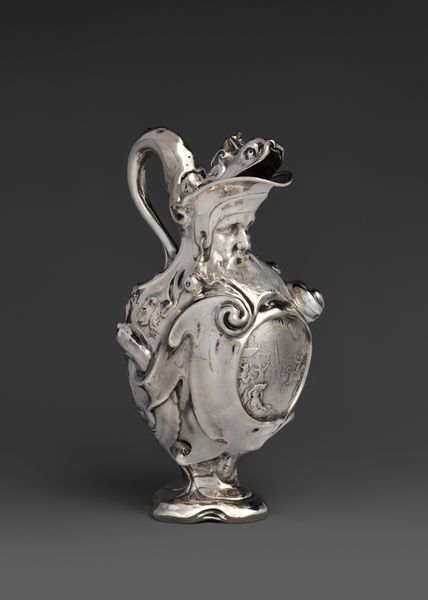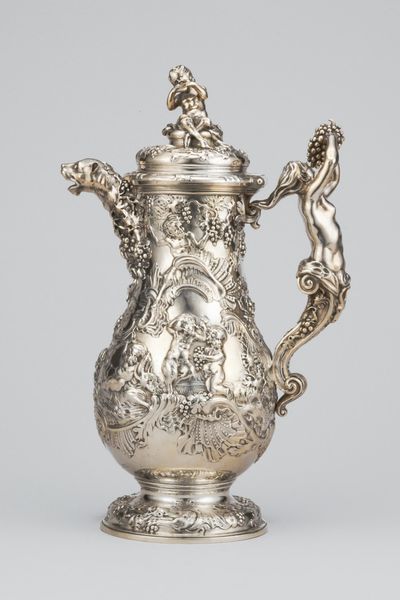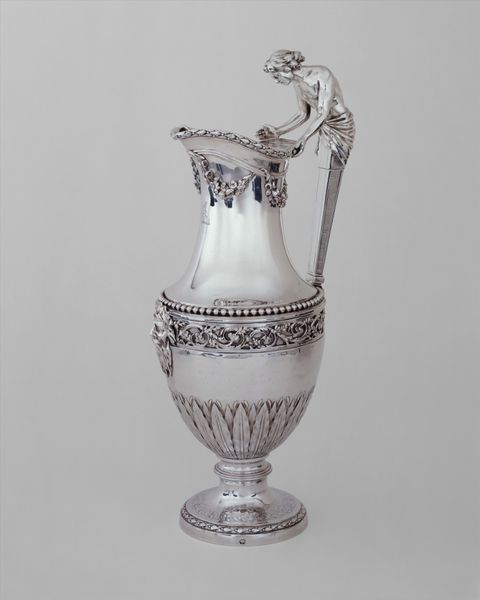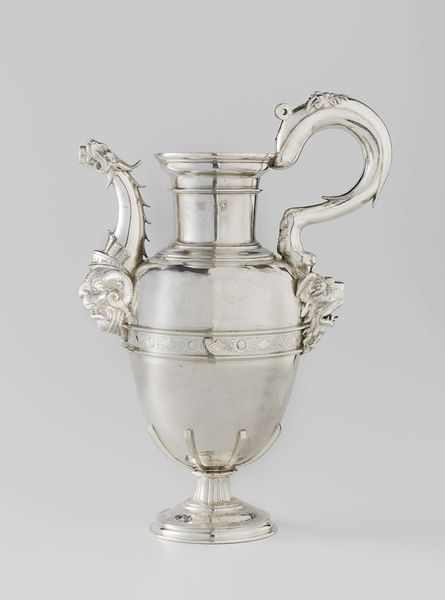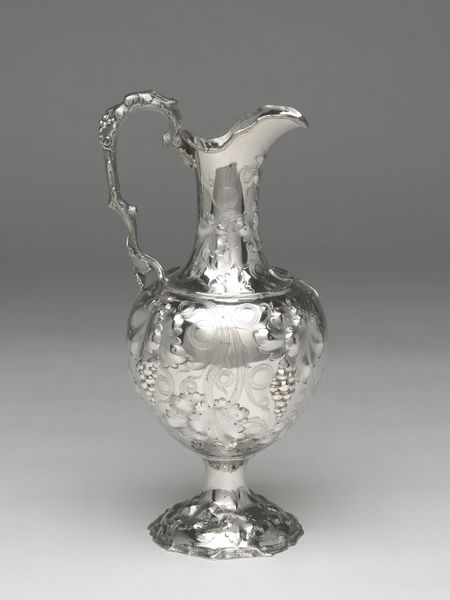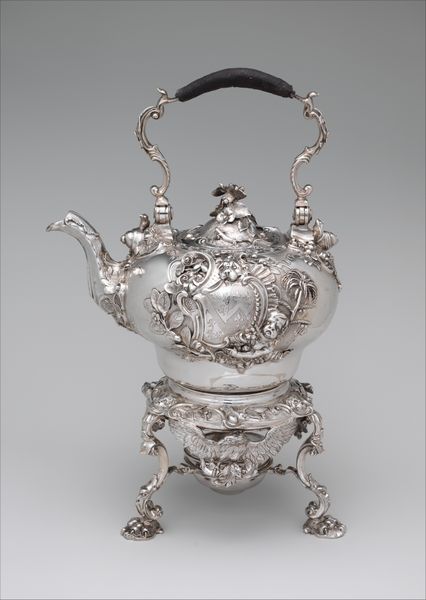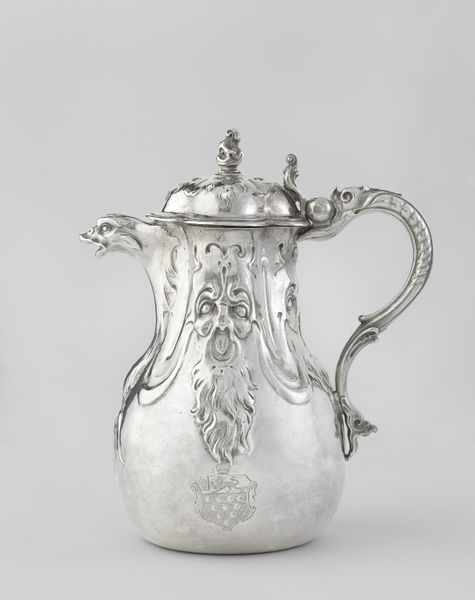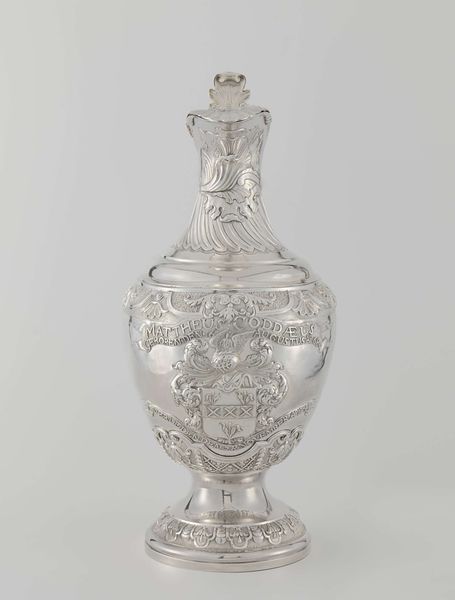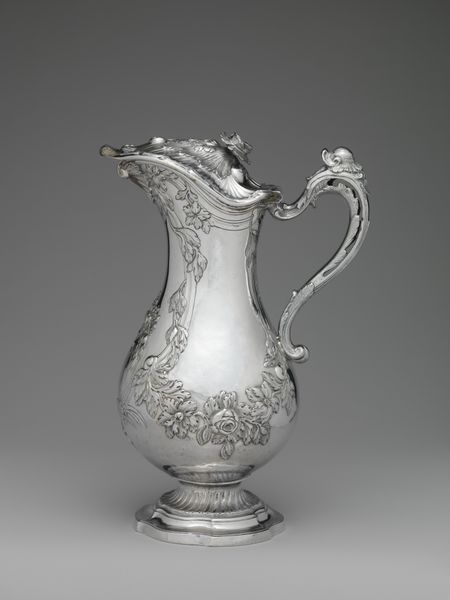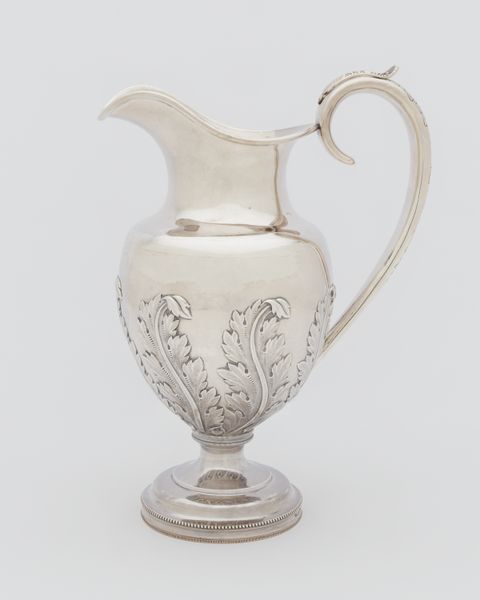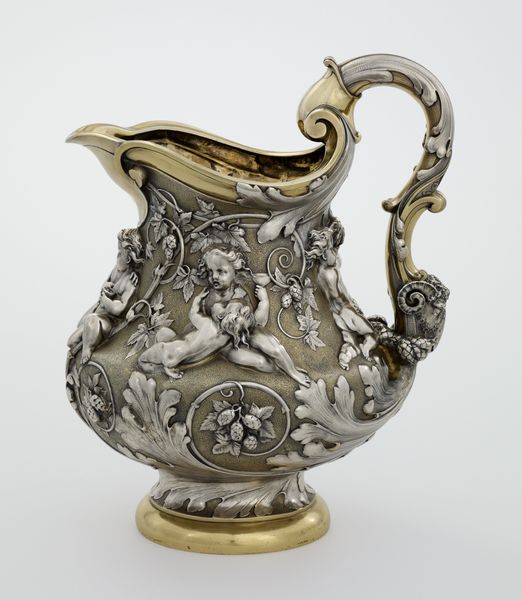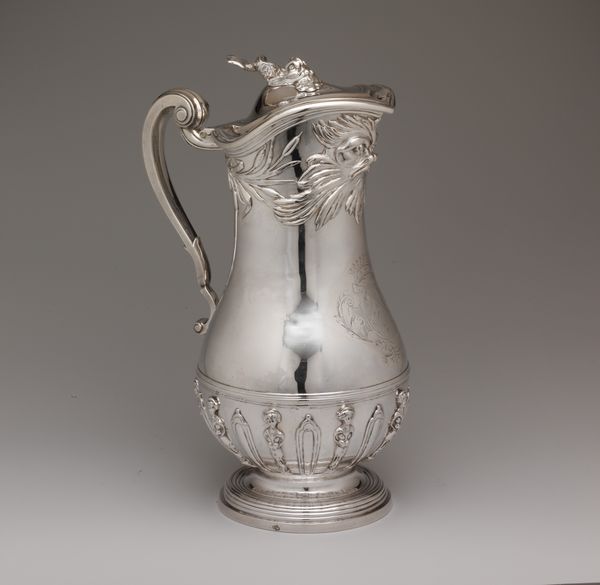
silver, metal, sculpture
#
silver
#
narrative-art
#
baroque
#
metal
#
figuration
#
sculpture
#
history-painting
Dimensions: height 33.0 cm, width 15.0 cm, depth 8.0 cm, weight 907 gr
Copyright: Rijks Museum: Open Domain
Curator: Oh, how stunning! The chasing and repoussé work just catch the light beautifully. Editor: It's quite striking. An immediate impression of formality and… restraint, oddly enough, despite the flowing lines. Is it silver? Curator: Yes, indeed. What we have here is an exceptional silver ewer made by Paulus Willemsz. van Vianen in 1613. You can find this exquisite example of Baroque artistry at the Rijksmuseum. Editor: Ah, Baroque, that explains some of the drama. What story does it depict? Curator: This piece illustrates scenes from the story of Diana, the Roman goddess of the hunt. She often appears as a symbol of chastity and the wild. Notice the careful arrangement of the figures, their gestures—all contributing to the narrative flow across the ewer's surface. Editor: Yes, I see how the figures are positioned to create a sense of continuous movement around the body of the vessel. But the symbolism interests me most. Is there an underlying significance to representing this particular myth? Curator: Certainly. Diana embodies ideals of independence and strength, qualities often associated with powerful women. However, in other contexts, she stands as the virgin huntress, the opposite of love or lust. A fitting figure to adorn an object of ceremonial or celebratory use. One must consider who owned the piece, what the occasion might have been, and then think how the patron sought to represent themselves and their values through a figure such as Diana. Editor: It also lends a certain gravity to the object, doesn't it? The cool sheen of the silver, the disciplined curves of the ewer, all framed by these allegorical allusions. There’s a deliberate juxtaposition of form and narrative here, pushing and pulling. It is a sophisticated composition. Curator: Absolutely, I agree. The Baroque, you see, excelled at bringing together multiple symbolic layers, inviting contemplation and, really, a sophisticated level of engagement from its audience. This ewer isn't just a functional object; it’s a vessel for meaning, a historical text cast in precious metal. Editor: Fascinating. The longer I look, the more I find myself seeing echoes of this story throughout time and across various forms of art, and of course, its influence within our cultural consciousness. Thank you for illuminating those details. Curator: My pleasure. The ability of such an object to encapsulate complex narratives and evoke potent symbols centuries after its creation is truly extraordinary.
Comments
rijksmuseum about 2 years ago
⋮
The ewer forms a set with the adjacent basin. They are the last works by Paulus van Vianen, who died in 1613. These objects were not made to be used but rather to be admired as works of art. The small, asymmetrical foot is unstable, and the handle highly impractical. The ewer and basin were bought by a Dutchman in Prague who took them to the Netherlands.
Join the conversation
Join millions of artists and users on Artera today and experience the ultimate creative platform.

